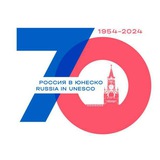Forwarded from Russian MFA 🇷🇺
⭐️ On September 3, 1944, at a critical point in the battle, Captain Grigory Tupikin, an artillery battery commander, drew fire to himself. When the Nazis attacked, Tupikin countered with his forward men and then later the entire company; they ended up engaging in hand-to-hand combat. He never left the battlefield even after being wounded three times, and he ultimately maintained his position.
⚔️ The artillery battery commanded by Captain Tupikin destroyed three of the enemy’s anti-tank guns, two mortar batteries, eight machine-gun nests and 140 German soldiers and officers.
🎖 On March 24, 1945, Grigory Tupikin was given the title Hero of the Soviet Union for his actions. He was also decorated with the orders of Lenin, the Red Banner and the Red Star for heroism in battle against the German occupiers.
❗️ On June 24, 1945, Grigory Tupikin, as part of a combined regiment, took part in the Victory Parade on Red Square to mark the Victory over Nazi Germany in the Great Patriotic War.
#FacesOfVictory
⚔️ The artillery battery commanded by Captain Tupikin destroyed three of the enemy’s anti-tank guns, two mortar batteries, eight machine-gun nests and 140 German soldiers and officers.
🎖 On March 24, 1945, Grigory Tupikin was given the title Hero of the Soviet Union for his actions. He was also decorated with the orders of Lenin, the Red Banner and the Red Star for heroism in battle against the German occupiers.
❗️ On June 24, 1945, Grigory Tupikin, as part of a combined regiment, took part in the Victory Parade on Red Square to mark the Victory over Nazi Germany in the Great Patriotic War.
#FacesOfVictory
Forwarded from Russian MFA 🇷🇺
🕯 Doctor of Military Science, Lieutenant General of the Red Army Dmitry Karbyshev was brutally murdered by the Nazis in the Mauthausen concentration camp in the early hours of February 18, 1945.
Dmitry Karbyshev was a military professional who fought in the Russo-Japanese War and the First World War. He served in the Red Army from 1918 and was considered to be one of the best military engineers. During the Winter War against Finland, he played an important role in the operation to break through the Mannerheim Line.
During the Great Patriotic War, he was wounded and taken prisoner by the Nazis while he was unconscious. Dmitry Karbyshev was imprisoned in many concentration camps during his time in captivity, including Majdanek, Auschwitz, Flossenbürg, Hammelburg, Sachsenhausen and Mauthausen.
☝️ The Nazis tried to persuade the Soviet general to cooperate. According to some data, originally the Germans wanted to place Karbyshev in command of the Russian Liberation Army. He was brought to Berlin in late 1942, where Chief of the Supreme Command of the German Armed Forces Wilhelm Keitel personally tried to entice Dmitry Karbyshev to side with Nazi Germany, but the Soviet officer remained steadfast: “I do not trade my conscience and my Motherland!”
While he was a prisoner of war, the Soviet officer organised anti-Nazi resistance groups, thus continuing the fight against the enemy. In early 1944 Karbyshev was sent to the Mauthausen concentration camp, where he was tortured and brutally murdered. The Nazis poured cold water on him in the freezing cold until he turned into an ice pillar. The concentration camp survivors, who witnessed Karbyshev’s death, said his last words were: “Stay strong, comrades! Think of the Motherland and courage will not leave you!”
🎖 The steadfast Soviet commander, whose feat went down in history, was posthumously awarded the title of the Hero of the Soviet Union for his courage and heroism.
#FacesOfVictory
Dmitry Karbyshev was a military professional who fought in the Russo-Japanese War and the First World War. He served in the Red Army from 1918 and was considered to be one of the best military engineers. During the Winter War against Finland, he played an important role in the operation to break through the Mannerheim Line.
During the Great Patriotic War, he was wounded and taken prisoner by the Nazis while he was unconscious. Dmitry Karbyshev was imprisoned in many concentration camps during his time in captivity, including Majdanek, Auschwitz, Flossenbürg, Hammelburg, Sachsenhausen and Mauthausen.
☝️ The Nazis tried to persuade the Soviet general to cooperate. According to some data, originally the Germans wanted to place Karbyshev in command of the Russian Liberation Army. He was brought to Berlin in late 1942, where Chief of the Supreme Command of the German Armed Forces Wilhelm Keitel personally tried to entice Dmitry Karbyshev to side with Nazi Germany, but the Soviet officer remained steadfast: “I do not trade my conscience and my Motherland!”
While he was a prisoner of war, the Soviet officer organised anti-Nazi resistance groups, thus continuing the fight against the enemy. In early 1944 Karbyshev was sent to the Mauthausen concentration camp, where he was tortured and brutally murdered. The Nazis poured cold water on him in the freezing cold until he turned into an ice pillar. The concentration camp survivors, who witnessed Karbyshev’s death, said his last words were: “Stay strong, comrades! Think of the Motherland and courage will not leave you!”
🎖 The steadfast Soviet commander, whose feat went down in history, was posthumously awarded the title of the Hero of the Soviet Union for his courage and heroism.
#FacesOfVictory
